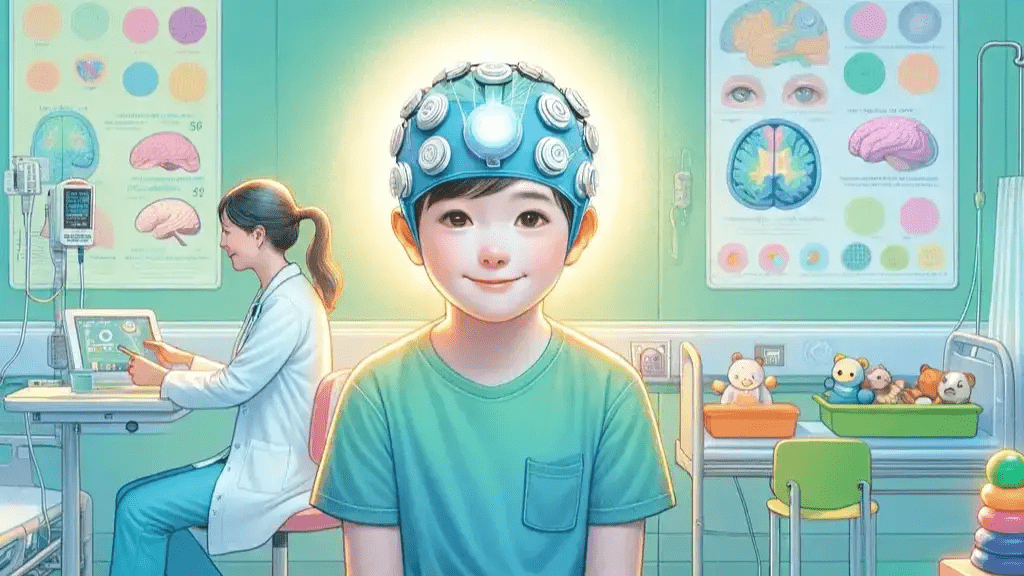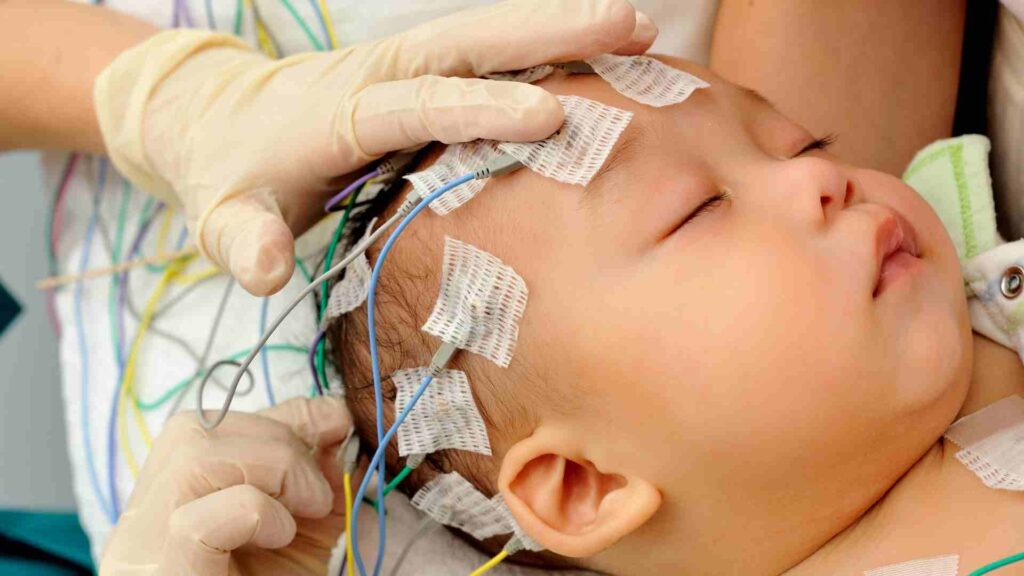
In the quest for innovative medical treatments, a new study presents a beacon of hope for children suffering from the debilitating aftermath of out-of-hospital cardiac arrest (OHCA). This groundbreaking research explores the combined use of transcranial Direct Current Stimulation (tDCS) and Nerve Growth Factor (NGF) in pediatric patients. This research is particularly encouraging for those interested in the potential of tDCS devices, as it showcases their effectiveness in critical and challenging medical scenarios. tDCS, known for its non-invasive approach to brain stimulation, has been a subject of interest for its potential to aid in neurological recovery. This study not only reinforces the viability of tDCS in clinical settings but also opens new avenues for its application, especially in treating severe neurological conditions in children.
The findings of this study are a testament to the evolving role of tDCS devices in medical treatment. Demonstrating success in such a critical area as pediatric recovery post-cardiac arrest is a major milestone. It underlines the effectiveness of tDCS in enhancing brain function and recovery, even in the most challenging situations. For medical professionals, patients, and technology enthusiasts alike, these results offer a renewed sense of optimism and a clear indication that tDCS devices can be integral in addressing complex neurological conditions. This study not only adds to the growing body of evidence supporting the efficacy of tDCS but also highlights its potential as a key component in future therapeutic strategies for pediatric patients.
The Challenge of Childhood Cardiac Arrest
Out-of-hospital cardiac arrest (OHCA) in children is a critical medical emergency that occurs unexpectedly outside a hospital setting. It involves the sudden loss of heart function, leading to a stop in blood flow and oxygen delivery to the body’s vital organs, including the brain. This can be caused by various factors, ranging from heart conditions to external triggers like accidents.
When OHCA leads to a prolonged lack of oxygen to the brain, it can result in a chronic vegetative state. This state is characterized by a child being awake but showing no signs of awareness or purposeful response to the environment. Children in this state may have sleep-wake cycles, but lack significant cognitive function, often requiring lifelong care and support. The impact on both the child and their family is profound, affecting emotional, financial, and social aspects of their lives. This condition underscores the urgency of finding effective treatments and interventions.
A Glimmer of Hope: New Treatment Explored
In the medical field, particularly in addressing the effects of pediatric cardiac arrest, two treatments have emerged as potential game-changers: Nerve Growth Factor (NGF) and transcranial Direct Current Stimulation (tDCS). NGF, a vital protein, plays a critical role in the development and survival of nerve cells, or neurons. It is thought to be capable of repairing and even regenerating neurons that have been damaged due to a lack of oxygen, a common consequence of cardiac arrest.
Transcranial Direct Current Stimulation (tDCS), on the other hand, is a non-invasive brain stimulation technique. This method involves applying a low-intensity electrical current to the scalp. The current, though mild, can influence the activity of neurons in the brain. The aim is to modulate brain activity in a way that encourages recovery and rehabilitation of brain functions. This is particularly relevant for children who have suffered from cardiac arrests, as it presents a new avenue for aiding brain recovery where traditional treatments might fall short.
Their combined application represents a holistic approach, targeting both the physical restoration of nerve cells and the functional enhancement of brain activity. This dual strategy opens new doors for improving neurological functions in children who have suffered from the severe effects of cardiac arrest, marking a significant step forward in pediatric neurorehabilitation.

Inside the Treatment: How It Works
In the study referenced, the innovative treatment combines intranasal administration of Nerve Growth Factor (NGF) and transcranial Direct Current Stimulation (tDCS). Intranasal administration is a non-invasive method where medication is delivered directly into the nose. This approach is beneficial because it allows the medication to bypass the digestive system and potentially reach the brain more directly and quickly. In the case of NGF, this method aims to deliver the protein effectively to the brain, where it can aid in nerve cell repair and growth.
Transcranial Direct Current Stimulation (tDCS), on the other hand, involves placing electrodes on the scalp. These electrodes deliver a low, steady stream of electrical currents to specific parts of the brain. This stimulation is thought to modify neuronal activity, which can help in improving brain function. The process is non-invasive and is considered safe, with the potential to assist in the recovery of brain functions, particularly after incidents like cardiac arrest in children.
Promising Results: A Step Forward”
The study in question demonstrated encouraging results from a novel treatment approach for children in a chronic vegetative state after an out-of-hospital cardiac arrest (OHCA). This treatment combined intranasal administration of Nerve Growth Factor (NGF) with transcranial Direct Current Stimulation (tDCS).
Functional and electrophysiological assessments, including Positron Emission Tomography (PET), Single Photon Emission Computed Tomography (SPECT), and Electroencephalography (EEG), were used to evaluate the treatment’s effectiveness. PET and SPECT scans are advanced imaging techniques that provide insights into the brain’s functional activity, while EEG measures electrical activity in the brain.
The results from these assessments showed promising improvements in the children’s brain function. There was evidence of enhanced brain activity and metabolic function, as observed in the PET and SPECT scans. Additionally, EEG results indicated improvements in brain electrical activity patterns. Clinically, these improvements were paralleled by observed positive changes in the children’s conditions, such as reduced spasticity and the acquisition of voluntary movements, particularly in the fingers, improved facial expressions, and responsiveness to stimuli.
These findings represent a significant advancement in pediatric neurorehabilitation, particularly for children severely affected by OHCA. The study highlights the potential of combining NGF and tDCS as a therapeutic strategy, offering hope for better outcomes in conditions previously considered untreatable.
Looking Ahead: The Road to Recovery
The study’s findings mark a pivotal moment in pediatric neurorehabilitation, particularly for children affected by severe brain injuries post-cardiac arrest. The successful use of NGF and tDCS showcases the potential of these treatments in fostering significant neurological improvements, offering a new ray of hope where traditional methods have been limited.
The importance of further research in this area cannot be overstated. Continued investigation will not only solidify the understanding of these treatments but also potentially expand their applicability to a broader range of neurological conditions. For children affected by such traumatic experiences, this could mean a world of difference – a chance at a better quality of life, improved cognitive and motor functions, and a step closer to recovery. The journey ahead is promising, and this study lays the groundwork for transformative advances in treating pediatric brain injuries.
The effectiveness of tDCS in this study not only demonstrates its potential in treating severe neurological conditions in children post-cardiac arrest but also reinforces its broader applicability in various other neurological and psychological conditions. The ability of tDCS to modulate brain activity and promote neural recovery and plasticity suggests its potential efficacy in treating disorders like depression, insomnia, and cognitive impairments. This study’s success thus opens up new possibilities for using tDCS in diverse therapeutic scenarios, offering a non-invasive and adaptable treatment option for a range of neurological conditions.
